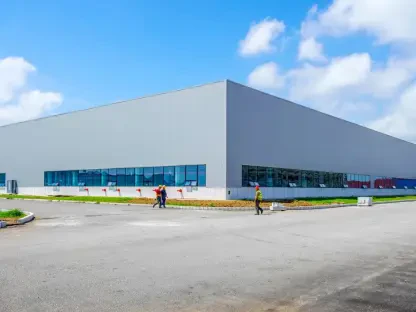People expect a lot from ecommerce businesses today. Whether that’s the expectation of two-day shipping—thanks to Amazon—or free return shipping—care of Zappos, consumers want similar experiences no matter the size of the retailer. Even mom and pop shops are held to these same standards and need to improve their ecommerce logistics and fulfillment approaches to keep up. The demand for warehouses continues to increase as online orders are forecast to reach 26% of all retail orders by 2025. To keep pace with this change in consumer behavior, the US needs to add 330 million square feet of new warehousing and distribution space. Record-breaking warehouse construction in 2022 is keeping up with demand and 546.1 million square feet of new warehousing and distribution space has been built.
1. Assess Your Current System
Whatever issues you’re encountering now, adding new technology to your warehouse processes won’t solve all your problems. Rather, it’s important to first examine what changes need to be made to your current system. Begin by analyzing what’s working well and what’s not. Interested parties should pay close attention to how inaccuracies are negatively affecting their organization. Utilize this information to decide on an appropriate Warehouse Management System (WMS).
Ask team members to share what aspects of their job they find most frustrating. This will help you pinpoint redundancies and inefficiencies where improvement is necessary. For example, is the current system for picking items done effectively? If not, you’re likely wasting time and money. A WMS can offer automated retrieval and picking solutions, such as optimized pick routes and automated inventory management. Similarly, manually entering product information for returned products—such as customer details, SKU, and purchase price—wastes time. With a WMS, you can use RFID tags to scan the product’s barcode, update stock levels, and process the refund within seconds, streamlining these procedures substantially.
2. Gather Team Requirements
After auditing your existing system, collect input from team members to create a list of functions they believe the warehouse management solution needs. This could range from back-office integration with order entry and inventory control modules to automations for compliance labeling and advanced shipping notices (ASNs). Encourage team members to prioritize their must-haves and nice-to-haves. This organized approach will help you eliminate any WMS that doesn’t fit your team’s or business’s needs.
Here are a few questions to get you started:
- What do you need to accurately pick, pack, and ship orders?
- What current workflows could be automated?
- What does your existing ERP system look like?
- What information is needed to make strategic warehousing decisions?
- How quickly does warehouse data need to sync across the enterprise?
Engaging your team in this process ensures that the WMS will address key pain points and improve overall efficiency. It also ensures buy-in from those who will be using the system daily.
3. Identify and Assess Vendors
Understanding your need-to-haves for your new WMS system provides a checklist to evaluate potential vendors. An important aspect of choosing a WMS is considering how much time and effort you’ll need to invest in implementing it. Each vendor should have robust knowledge of supply chain operations, including warehouse management, inventory management, order management, accounting, and Electronic Data Interchange (EDI) integration.
Once you’ve created a shortlist of potential vendors, look for solutions that improve inventory control and staff productivity. Ensure your warehouse staff can integrate the new system with the tools and equipment already at their disposal, such as RFID, communication equipment, shipping systems, pallets, lift trucks, and forklifts. All information gathered from using this equipment should be available across the entire enterprise, especially accounting and inventory management data.
The vendor you choose should be dedicated to addressing the evolving needs of the warehousing and logistics industry, evident through their commitment to upgrading and enhancing their product. Lastly, get a clear understanding of the operational costs associated with each option by asking specific questions about estimated license fees, build-out costs, implementation timelines and expenses, annual support, maintenance fees, and staff training costs.
4. Select
Today’s consumers have high expectations for ecommerce businesses. Influenced by giants like Amazon and Zappos, shoppers now anticipate fast shipping, often within two days, and hassle-free returns. These expectations apply across the board, regardless of the retailer’s size, putting pressure on even small family-owned shops to enhance their ecommerce logistics and fulfillment strategies. As online shopping grows, the need for warehouse space is booming. By 2025, it’s predicted that 26% of all retail orders in the US will come from online purchases. To support this trend, America must add an additional 330 million square feet of warehousing and distribution space. In response, 2022 saw a record-breaking amount of warehouse construction, with 546.1 million square feet of new space built to meet the rising demand.
The increasing reliance on ecommerce means businesses must adapt quickly to changes in consumer behavior. Efficient logistics and sufficient storage capacity are crucial for meeting consumer expectations and staying competitive in the evolving retail landscape. Ultimately, maintaining high standards in online shopping experiences is no longer optional but essential to success.









